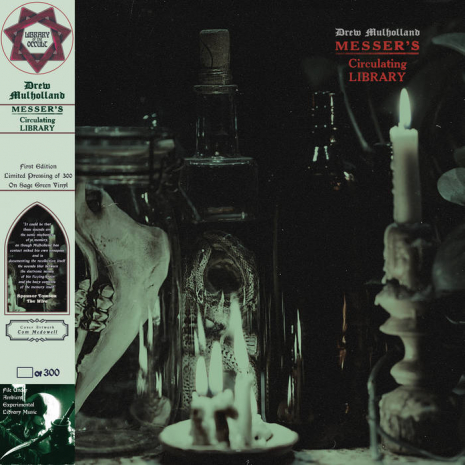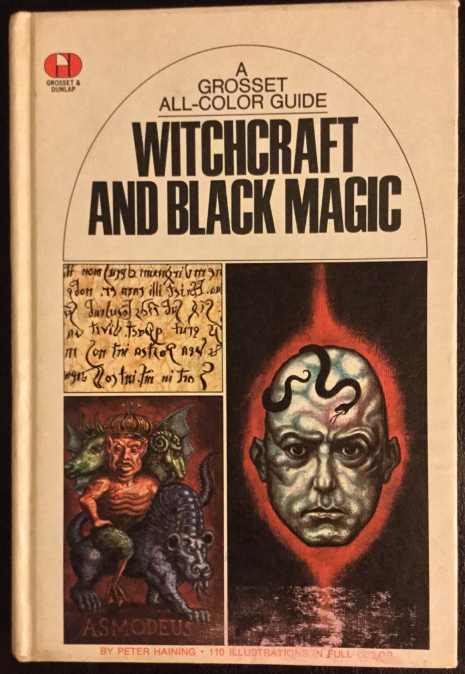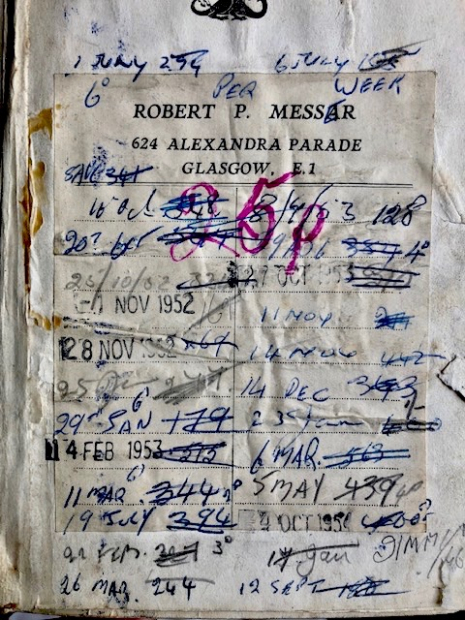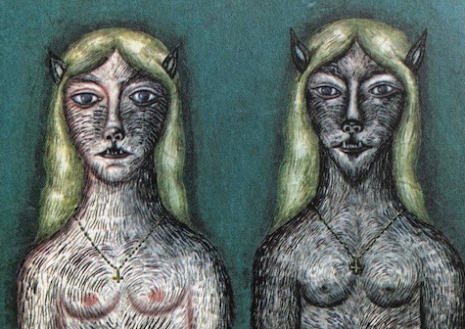
The Guardian referred to artist/musician Drew Mulholland as “the putative godfather” of the psychogeographic rock movement. Mulholland’s idiosyncratic compositional techniques (for that is the right word) include “sampling” the atmosphere of a particular location and incorporating this resonance/mood/memory into his soundscapes. Formerly trading under the name Mount Vernon Arts Lab, he has staked out a territory between psychogeography and hauntology, inspired by séances, Cold War architecture, desolate places and the occult. Mulholland has collaborated with the likes Isobel Campbell, Sonic Boom, Teenage Fanclub’s Norman Blake, Adrian Utley from Portishead and Barry 7 of Add N to (X). He has also worked with Coil, which… makes a lot of sense!
The subject of Mulholland’s latest project is a strange bookstore recalled from childhood. It sounds like the evil twin of Brian Eno’s On Land or the soundtrack to the infernal rites of a 19th century secret society and comes in a slickly published, limited edition object d’art record jacket from the Library of the Occult label. (If you are interested in a physical copy on vinyl, you should act quickly as they are nearly all sold.) His Patreon account can be found here and you can contact him about the creation of original music pressed onto a bespoke handcrafted record made just for you. Or for someone else.
What was the inspiration behind Messer’s Circulating Library?
Messer’s stood across from my Aunt Nan’s flat in Glasgow, and was a mixture of borrowing library, second hand bookshop, newsagent, and tobacconist. Even in the early 70s it was a place outside time, dark, musty, and seemed to have a personality, a very special atmosphere. I also remember they had a print of Francis Barrett hanging above the door. A copy of Witchcraft and Black Magic by Peter Haining, with paintings by Jan Parker, was my Aunt Nan’s first purchase from there, and her excitement showing it to me coupled with those images and her taking me over to the window in order for her to point the location of Messer’s out to me all seemed like a dozen firecrackers going off in my head at once.

So it was an actual, real shop?
Absolutely, it was at 624 Alexandra Parade in Dennistoun opposite Wood Street until the mid 1970s.

How did you create the sounds of ectoplasmic formation heard on the album? Actually let me ask that in a different way, what was the original “input” source material that you manipulated? Describe your working methods. You often begin with field recordings, right?
Yes, field recordings are my basic ingredients whether it’s recording the locations used in The Wicker Man, the ambient sounds in the Anatomy Museum at the university, or a 1930s statistical analysis calculating machine. The location is fundamentally important to the work, from them the ideas spring. For Messer’s Circulating Library I went to its former location and recorded inside the deli that is there now and also the approach to it at different times of day. Then once I’ve catalogued those sounds I get to work and see what they suggest, including titles. The “ectoplasm formation” was made of a few elements from the recordings but the main reasons they work is varispeed and processing, and especially as a secondary consideration the manipulation of reverbs.

Painting by Jan Parker
I have to say that it does sound genuinely scary, as if you’ve captured the peak moment of some infernal occurrence. It’s got a genuinely evil vibe, not a corny horror movie vibe. How do you achieve that? What is that sonic quality that makes these pieces so intense?
I think it must be the reverbs, it/they take those sounds…somewhere. You may well believe that you are controlling them but I think that’s the point where something else kicks in. That’s the time the titles usually suggest themselves, too. ‘‘Horror Hee Black Pods,” “Marshe Benediction,” and “Fierce Chemistry” all came that way on this album. What I’ve learned is to totally immerse yourself in the sound and completely trust your instinct
I never regarded it as ‘‘evil’’ per se, however my introduction to Messer’s was through the feeling I got being around my grandma’s kitchen table when she was reading the leafs, pondering coincidences, or predicting the future, and of course Jan Parker’s paintings did terrify and intrigue me in equal parts… so many questions there. So I always connected the Haining book and the lo-fi occultism in the back kitchen with the sense and atmosphere of the shop, which I always found to be pleasant, welcoming, and an adventure. It was all about atmospheres.

“Mandy Rakes Up the Leaves Again”
Tell me about your Syd Barrett piece.
That was great fun, I was giving a talk during the Alchemical Landscape conference at Cambridge and the next morning I naturally started wandering around making recordings (which were released earlier this year). Being a complete Syd fanatic, I, of course, had to pay my respects at his boyhood home on Hills Road. When I got there the gardeners had just finished work and lots of detritus was still lying on the path so I collected some and glued them onto card, cut it into a 7’’ circle, played it on my turntable, and recorded it. Afterwards I ground down what was left of the leaves and twigs and added their dust into the paint I was using back at Corpus Christi College to create a abstract painting. Which I still have.
I realize now that it’s just the same process I use for creating sounds, using an artefact from a relevant location.